 Misconceptions
Misconceptions  Misconceptions
Misconceptions  Mysteries
Mysteries 10 Strange Unexplained Mysteries of 2025
 Miscellaneous
Miscellaneous 10 of History’s Most Bell-Ringing Finishing Moves
 History
History 10 Great Escapes That Ended Right Back in Captivity
 Weird Stuff
Weird Stuff 10 Fascinating Things You Might Not Know About Spiders
 Food
Food 10 Everyday Foods You Didn’t Know Were Invented by the U.S. Military
 History
History 10 Odd Things Colonial Americans Kept at Home
 Weird Stuff
Weird Stuff 10 Superstitious Beliefs That Once Consumed Entire Cultures
 History
History 10 Bizarre Friendly Fire Incidents in Military History
 Technology
Technology 10 Modern Technologies That Accidentally Imitate Ancient Magic
 Misconceptions
Misconceptions 10 Common Misconceptions About the Victorian Era
 Mysteries
Mysteries 10 Strange Unexplained Mysteries of 2025
 Miscellaneous
Miscellaneous 10 of History’s Most Bell-Ringing Finishing Moves
Who's Behind Listverse?

Jamie Frater
Head Editor
Jamie founded Listverse due to an insatiable desire to share fascinating, obscure, and bizarre facts. He has been a guest speaker on numerous national radio and television stations and is a five time published author.
More About Us History
History 10 Great Escapes That Ended Right Back in Captivity
 Weird Stuff
Weird Stuff 10 Fascinating Things You Might Not Know About Spiders
 Food
Food 10 Everyday Foods You Didn’t Know Were Invented by the U.S. Military
 History
History 10 Odd Things Colonial Americans Kept at Home
 Weird Stuff
Weird Stuff 10 Superstitious Beliefs That Once Consumed Entire Cultures
 History
History 10 Bizarre Friendly Fire Incidents in Military History
 Technology
Technology 10 Modern Technologies That Accidentally Imitate Ancient Magic
10 Over-Used Restaurant Buzzwords
‘Jumbo shrimp!’ Remember the comedian George Carlin making us laugh at the absurdity of restaurants using the buzzword ‘jumbo’ in front of shrimp? What made this funny? The realization that we saw this type of thing all the time, right there in front of us, on menus, and thought nothing of it.
I thought of this the other day when I was about to have a nice meal at a restaurant and all across the menu I noticed various ‘buzzwords’ used to try to entice me to buy the food. You have all seen them. A simple ‘hamburger’ description isn’t good enough – though I know very well what a hamburger is and what it will look and probably taste like. No, the simple word ‘hamburger’ is not sufficient. To lure me in and get me to try THEIR hamburger, they use buzzwords to describe it. Therefore, a simple hamburger becomes a ‘hand-selected, free-range, grass-fed, organic, choicest beef hamburger.’ Or some such nonsense. I thought to myself – now here is an idea for a top ten list!
Doing some research, I was quickly overwhelmed with possible top ten choices. Hell, I could rattle off about twenty just from memory. Between eating out and reading many menus, and constant media bombardment, we all know these buzzwords. Their use (and over use) render them mostly meaningless. I mean, can a gigantic chain fast food place with hundreds of thousands of restaurants scattered around the globe really ‘hand-select’ anything they serve? But there it is, right there on the menu. ‘Hand-select salads’ or ‘select prime beef.’ These buzzwords must work, or why would all restaurants continue to use them? So here are ten over-used restaurant buzzwords.

At the dawn of time, before the 1970s, before there was lite beer, there was – beer. Then a black obelisk of marketing appeared before man, and gave unto the world the word – ‘lite.’ Meant to imply ‘light’ (as in, not heavy), they did not even spell it correctly. But soon the idea of a light (lite) beer caught on, and sold tons of product for Miller Brewing Company. Everyone jumped on board. Not just other beer makers, everything and anything having to do with food, within a few short years, would have the post script ‘lite’ attached to it. It got so that everything could be ‘lite.’ A Mad Magazine parody of this summed it up nicely when it depicted a can of ‘Chicken Fat Lite.’ As I am writing this I am drinking ‘low calorie’ Gatorade though it could just as easily be called ‘Gatorade Lite.’ Today, the word ‘lite’ and all it is meant to convey has taken over. Entire sections of the menu at restaurants are titled ‘Lite,’ or ‘Lite-Faire.’ Is the food really ‘lite’? Yes? In what sense? Is it lighter? Less heavy? Lower calorie? Lower fat? Healthier or better for you? In fact, the answer could be all of the above, or none of the above. The word ‘lite’ has simply taken on a mythology of its own. The word is slapped on the product or used as a buzzword to describe a menu item, and we just automatically know what it means. Right? Don’t we?
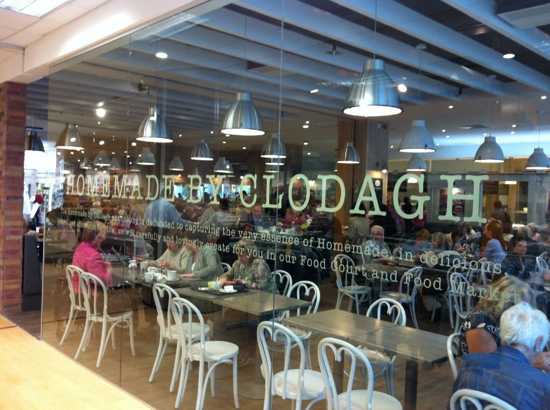
When you go to a restaurant, seldom if ever is it located inside someone’s home. Yet the menu tells you their mashed potatoes are ‘homemade.’ Seems odd? Some restaurants, especially those that really are small and family owned and operated (something that is fast disappearing from the landscape of the United States), really do serve you food that is homemade – homemade as in it comes from a home recipe and is prepared by a family who may actually live at the restaurant (making it their ‘home’). But too often you see the word ‘homemade’ attached to foods in larger or even chain restaurants. There is just no way this food is in any conventional sense of the word, ‘homemade.’ Perhaps it is ‘prepared by hand.’ You see that a lot too, but at least that accurately describes the process by which the food you are eating was prepared. Made not by a machine, but by hand. Too often the word ‘homemade’ is used interchangeably with ‘hand-made.’
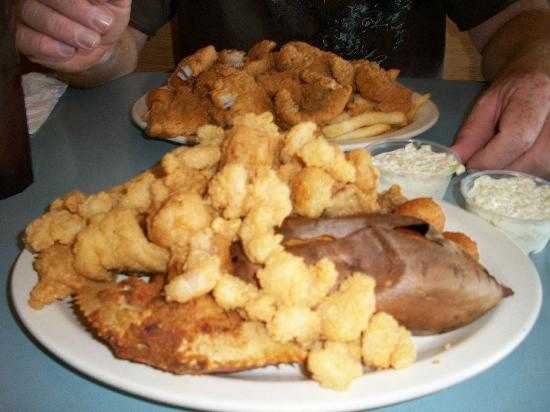
One of my all-time favorites, the word ‘generous’ is usually added to the word ‘portion’ – describing the sheer volume of food that is about to be laid before you to eat. But just what is a ‘generous portion’ of food? Very subjective wouldn’t you say? It is meant to imply that we (the restaurant) are going to pile it on! Sometimes this is the case and truly American-sized portions of food, so huge no human could eat all of it, arrives on your plate. Sometimes, not so much. The ‘generous portion’ turns out, upon close examination, to be pretty much the same portion of the food you would get from any similar restaurant. Have you ever seen anyone return a meal for lack of generosity in the portions? Or, can you imagine somewhere, someone wanting to return their meal and saying to the waitress ‘I specifically requested the miserly portion.’
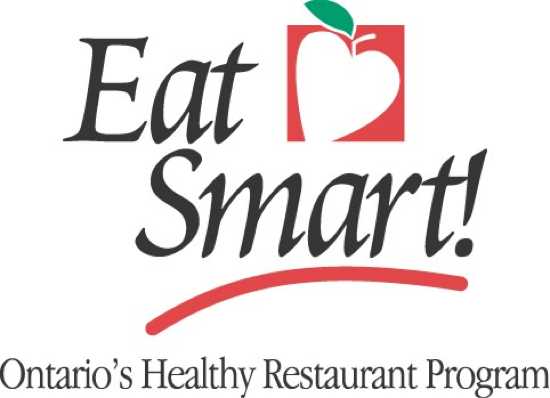
I am old enough to remember when restaurants didn’t care if they served ‘healthy’ food, nor did they try to convince you the deep-fried greasy thing you were eating was anything other than what it was. People ate eggs and bacon and potatoes for breakfast, and that was that. Life was simple then. You ate food, whatever it was, in whatever portions you wanted. You worked, you smoked cigarettes, and you died. Then along comes the 1980s and all of a sudden, scientists were telling us eggs were bad! Steak was bad! Anything from a pig was really bad! Overnight ‘Mr. Steak’ turned into ‘Finley’s.’ ‘Kentucky Fried Chicken’ morphed into ‘KFC.’ The words ‘steak’ and ‘fried’ went from being simple descriptions of what food was being served, to words that described a perception of an ‘unhealthy’ eating lifestyle. In other words – the kiss of death for chains in the 1980s-1990s when all of a sudden, people wanted to eat ‘healthy.’ Therefore, all manner of new buzzwords had to be invented to tell you the food you were eating off the menu was not going to kill your heart and liver, it was actually good for you! Examples included ‘wholesome,’ ‘fresh,’ and ‘natural.’
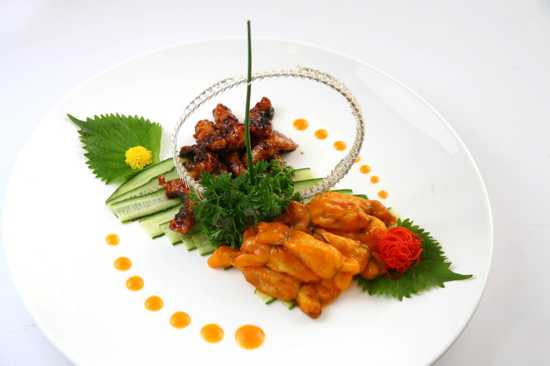
Of all the recent food buzzwords you can find on restaurant menus, the most buzz-worthy has to be ‘signature.’ This word is meant to imply, to the diner, that what they are selecting off the menu and about to eat and enjoy, was made by someone who put their signature to it. OK, maybe not actually made as in prepared. The cook is not going to sign your food. But someone, somewhere, maybe came up with a new recipe or a new way to prepare the food, and as such, is personally certifying, through his or her signature, that what you are getting is, well, ‘signature.’ To be honest, I don’t know what this is meant to imply really.
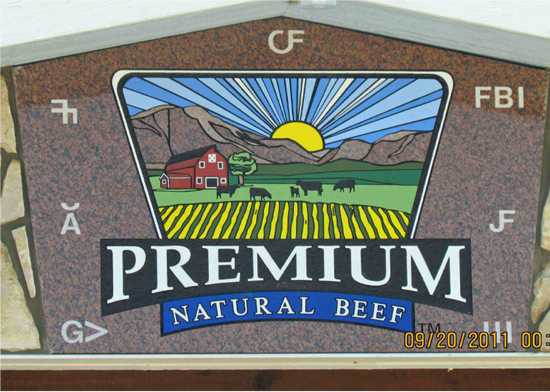
Premium is a buzzword used to describe all manner of things, but at least here in the USA, we associate the word ‘premium’ mostly with gasoline. ‘Premium gas.’ It’s the most expensive button on the gas pump, the one we seldom push unless we are driving a car with an engine that requires it. Just what does the word ‘premium’ describe when I see it on a restaurant menu? Top-of-the-line? OK. The very best? OK. But how do I know what is being served to me is in fact ‘premium’ beef? What exactly is it that separates this chunk of cow meat from all the others and makes it deserving of the title? There was a time, not long ago, when the government decided, and enforced through regulation and inspection, certain grades of food, especially meat. To call meat ‘Grade A’ or ‘premium’ really meant something then. There was a described and quantifiable method to ensure that what you were getting really was ‘premium’ (as opposed to just, run of the mill and ordinary). But today you see the word ‘premium’ attached to all manner of food.
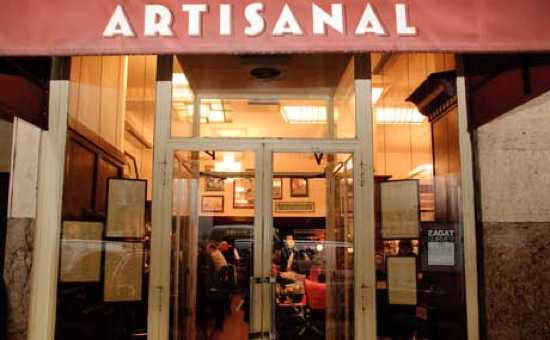
The word artisanal literally means ‘a worker who practices a trade or handcraft’ or ‘one who produces something, usually a food, in limited quantities using traditional methods.’ Wow. The word brings to mind real artisans: potters, barrel makers, monks cloistered away somewhere making beer, shepherd’s churning butter and making cheese. But today, you open a menu and there you see ‘artisanal’ cheese, or ‘artisanal’ beer. Even ‘artisanal sausage.’ The word ‘artisanal’ is now somewhat interchangeable with the ‘local’ or ‘slow’ food movement. Where food is prepared by hand, in small amounts, using traditional and sustainable methods. See, I used several buzzwords to describe a buzzword. But really that is what we are being sold when we pick up a menu and select an item with the word ‘artisanal’ on it. An image that in all likelihood, is a phantom. Was the cheese you are eating really made from hand-milked cows, and hand churned? Maybe. Was the ‘artisanal sausage’ ground up from the meat of a pig fed, well, fed what exactly? Pigs will eat anything. What makes the meat from a pig (sausage) ‘artisanal’? Did the sausage come from a pig that was ‘free-range’? Pigs are not free range animals. It does get a bit confusing. And I do not mean to make fun of the actual local food movement which I believe is a great thing and a more sustainable lifestyle would do all of us, and this world, a great favor. But really. ‘artisanal sausage’?
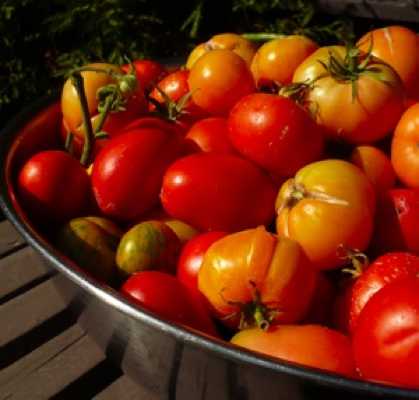
I live in the tomato capital of the world (how is that for a geographical food description buzzword?). Lancaster County, Pennsylvania, and to be specific, the little hamlet of Washington Borough, PA. Some of the very best tomatoes in the world are grown right here. Come visit the annual Washington Borough tomato festival some summer and see for yourself. I would have called it the ‘World Famous’ Washington Borough tomato festival, but it isn’t. That would be using an inaccurate buzzword to try to get you to come to the festival. I would not do that to Listverse readers.
Now, back on topic. I am no farmer, but having grown up here, I can attest to one undeniable fact about tomatoes. You need the sun to grow them. Yet, for some reason, restaurants everywhere want me to know that the tomatoes they are serving me are ‘sun-grown,’ or ‘sun-ripened.’ Well smack me upside the head in the county square! You don’t say? These tomatoes I am eating were ‘sun-ripened’?! I am impressed. I am even more impressed when I find my tomatoes were ‘sun-dried,’ or the coffee I am drinking was made with ‘sun-roasted’ beans, or the lettuce on my salad was ‘sun-grown.’
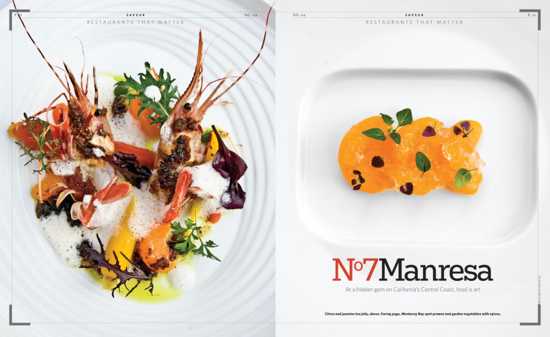
One of my personal pet peeve restaurant menu buzzwords. I know what a food award is, or at least is supposed to be. Some products, like certain beer and whisky brands, actually print the awards and medals they have won right on the can or bottle. Pabst Blue Ribbon beer is named after its award for goodness sake. It’s right there, on the can – a blue ribbon! So when I see ‘award-winning salad’ on a restaurant menu, I ask – ‘well, where is the award?’ ‘Is it hanging on the wall somewhere, maybe next to the rest rooms?’ ‘What was the award for?’ ‘Greenest colored lettuce?’ Call me a skeptic and a cynic, but I won’t believe the salad won any award, or at least not any award that counts, until I see it.
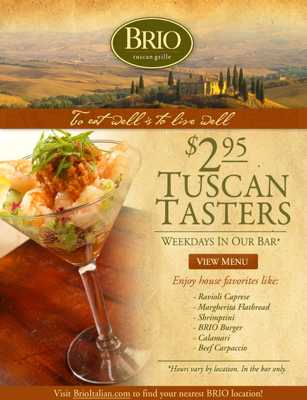
My #1 choice for overused food buzzword. Tuscan. Tuscan. You see it everywhere. Tuscan this, Tuscan that. What is it supposed to mean? I think it is supposed to implant in my mind some sort of vision of a sunny Mediterranean villa, with the light glistening off the sea and open air markets of fresh produce – the Tuscany region of Italy and the various Tuscan forms of cuisine from that area. But does what I am ordering off the menu have anything remotely to do with the Tuscany form of cuisine? And thus, more and more things on the menu bear the title ‘Tuscan.’ Deserved or not.
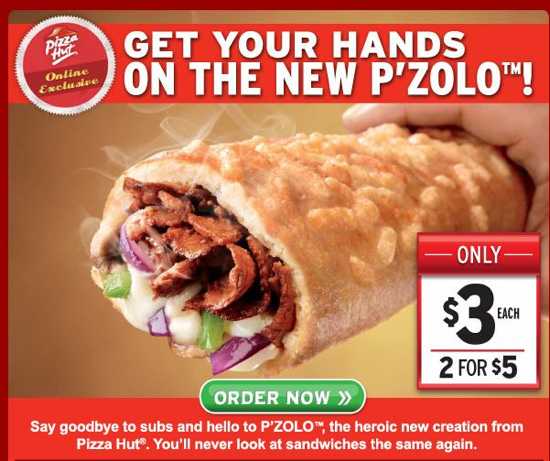
Advertising is a cruel game. Especially in the fast food chain restaurant business. People want, or expect, something new from these chains, all the time. And marketers and advertisers are challenged with coming up with these new food choices. One of the latest developments I have seen, mostly on pizza and Mexican fast food advertising is the proliferation of words to describe the food, or food titles that simply make no sense at all. What is ‘green tomatillo sauce’? A Pico de Gallo? An Enchirito? What is a P’Zolo? Or a P’Zone? Who comes up with these words? They are tossed out there at you, in the fast-paced TV advertisement, usually with the food literally flying through the air too! They sound Mexican, or pizza-like, so they must be actual foods, right? Quick, did you see it? Flying across the TV screen through a perfect sheet of flowing vertical water. It was a P’Zone!








